Complimentary worldwide shipping on orders over $400 · No import tariffs for most countries
Complimentary worldwide shipping on orders over $400 · No import tariffs for most countries
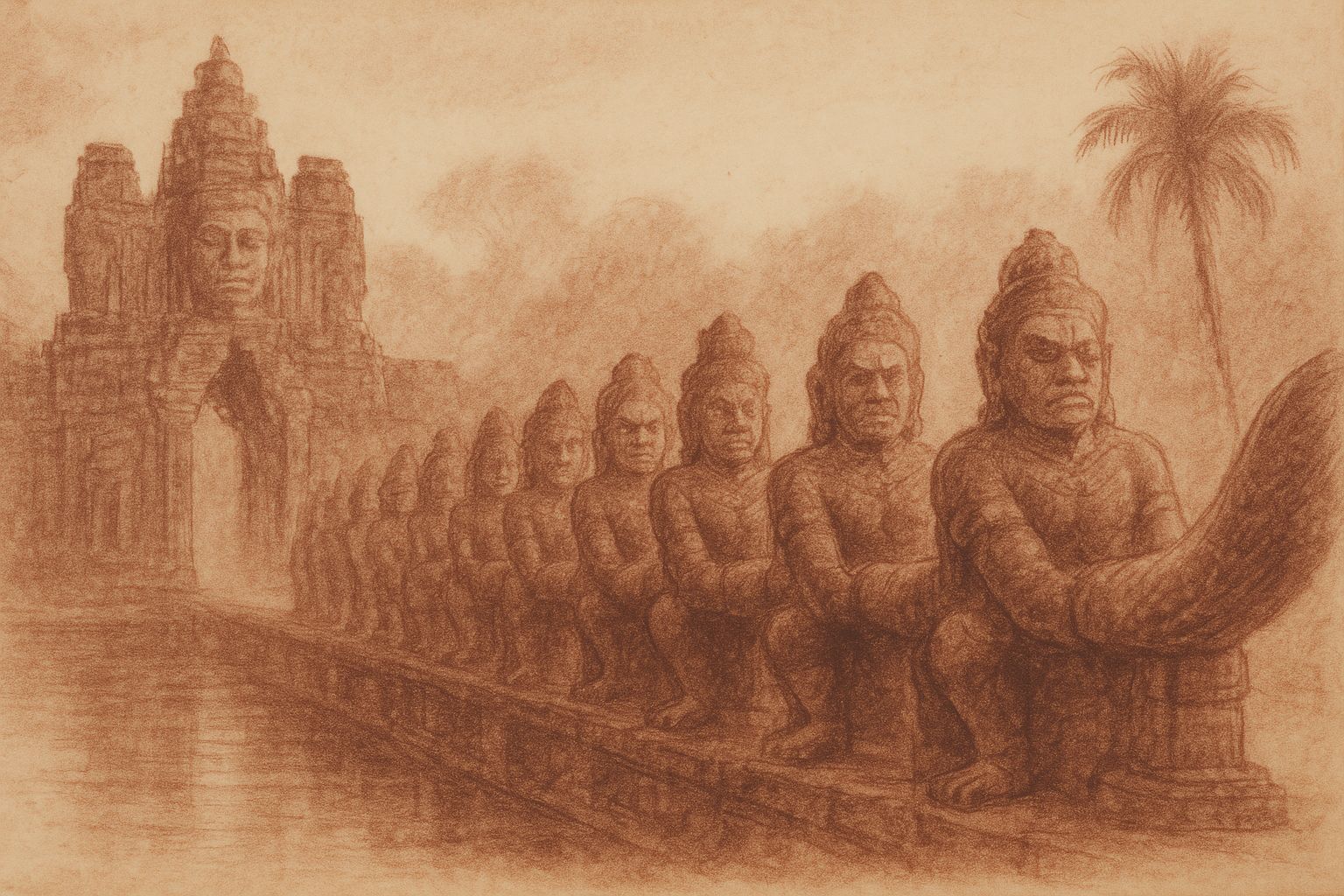
The Asura Within
“Even the demon seeks the dawn; he simply does not yet know how to open his hands.”
Morning along the moat of Angkor Thom.
The pilgrim stands before the eastern gate where a bridge of stone giants draws taut across still water.
To the left, devas — composed, serene, each shoulder bearing the weight of a coiled naga.
To the right, their mirrors: asuras, eyes bright with hunger, gripping the same serpent as if it might drag heaven down.
The causeway is not a path but a cosmos.
Every traveller must cross this contest of opposites.
I · Threshold of Struggle
The scene recalls the old relief at Angkor Wat: gods and demons churning the Sea of Milk for the nectar of immortality.
For a moment they laboured together, turning Vasuki around Mount Mandara until the ocean foamed with both poison and promise.
Then desire divided them.
The devas seized what they could hold; the asuras grasped at the rest.
The sea became a mirror of the heart — its turbulence the price of awakening.
Here, on Jayavarman VII’s causeway, that myth takes stone form: devas and asuras straining in opposite directions, each necessary to the motion of the world.
The bridge itself becomes the axis between ignorance and insight.
II · Architecture of Balance
The sculptors granted no hierarchy.
Asura and deva share the same sinew, the same precision of gaze.
They are brothers parted by perception, not by birth.
Walk slowly and the teaching unfolds: balance lies not in triumph but in relation.
The serpent they grasp is the way itself — the energy that must be held, never owned.
These gates are thresholds where the profane meets the sanctified.
What makes them holy is inclusion, not exclusion: light and shadow standing together in recognition.
To cross here is to admit the unfinished work within oneself.
III · Myth Made Ethical
In Khmer cosmology the asura is not evil; he is unawakened.
His force is near to light, yet twisted by craving.
Every rebellion against heaven hides a yearning for return.
When later poets likened the Cham king Jaya Indravarman to Ravana — the demon who shook Mount Kailasa — they were not condemning a people but translating war into parable.
The enemy became mirror; history, instruction.
The pilgrim feels that conversion still alive in stone: worldly conflict re-imagined as the struggle for consciousness itself.
The asura’s violence is our own impatience for clarity.
IV · Crossing the Causeway
He begins to walk.
On both sides the giants tighten their grip.
Sunlight slides across laterite shoulders; lichen glimmers like aged gold.
From afar they appear identical; only up close does difference breathe — a tilt of jaw, a flicker of restraint.
Halfway across, he stops.
The naga’s scales beneath his hand are warm, as if the earth were quietly exhaling.
The bridge spans not water but an inner gulf — the distance between grasping and grace.
The devas pull toward stillness; the asuras toward possession.
The serpent binds them both until the pilgrim learns to hold without clinging.
V · The Lesson of Symmetry
Angkor teaches through repetition.
Each gate repeats its chorus: giants of day, giants of night, serpent beneath, tower above.
What begins as opposition ends as rhythm.
In walking, the eye reconciles what doctrine divides.
Duality becomes instrument.
The asura need not be slain; he must be educated.
When tempered by compassion, his strength guards the threshold.
Those once imagined as rebels now literally keep the gates.
Stone records their redemption.
VI · From Threshold to Sanctuary
Beyond the gate, the path ascends toward the Bayon, where the smiling towers of Lokeshvara greet the horizons.
Looking back, the pilgrim understands: the calm above is born from the struggle below.
The causeway’s tension matures into serenity.
Jayavarman VII rebuilt his kingdom not upon conquest but upon healing — fury refined into mercy, ignorance into insight.
The architecture confesses this truth: empire remade as the body of awakening, its veins the bridges, its heart the tranquil smile of stone.
VII · The Pilgrim Within
By afternoon the moat reflects a sky of scattered gold.
The pilgrim rests beneath frangipani shade, watching gods and demons tremble in mirrored water.
A verse surfaces from the Dhammapada:
“The conqueror breeds hatred; the defeated dwells in sorrow. Peace lies in the renunciation of both.”
The asura within him stirs — the part that must win, must own.
He breathes until the hunger eases into seeing.
The giants become two halves of a single face — consciousness learning itself.
The bridge is no longer a battleground but a prayer.
VIII · Coda · The Mercy of Opposites
Night gathers. Fireflies kindle above the moat.
The towers darken; their smiles remain.
The pilgrim touches the naga’s coil, polished by centuries of hands, and whispers thanks to both sides — to the devas for patience, to the asuras for passion.
Without struggle, no movement.
Without longing, no path.
The demon’s reach and the god’s restraint complete one vow.
He steps into the dark, carrying within him the balanced pull of both.
Thus the demon seeks the dawn.
Also in Library
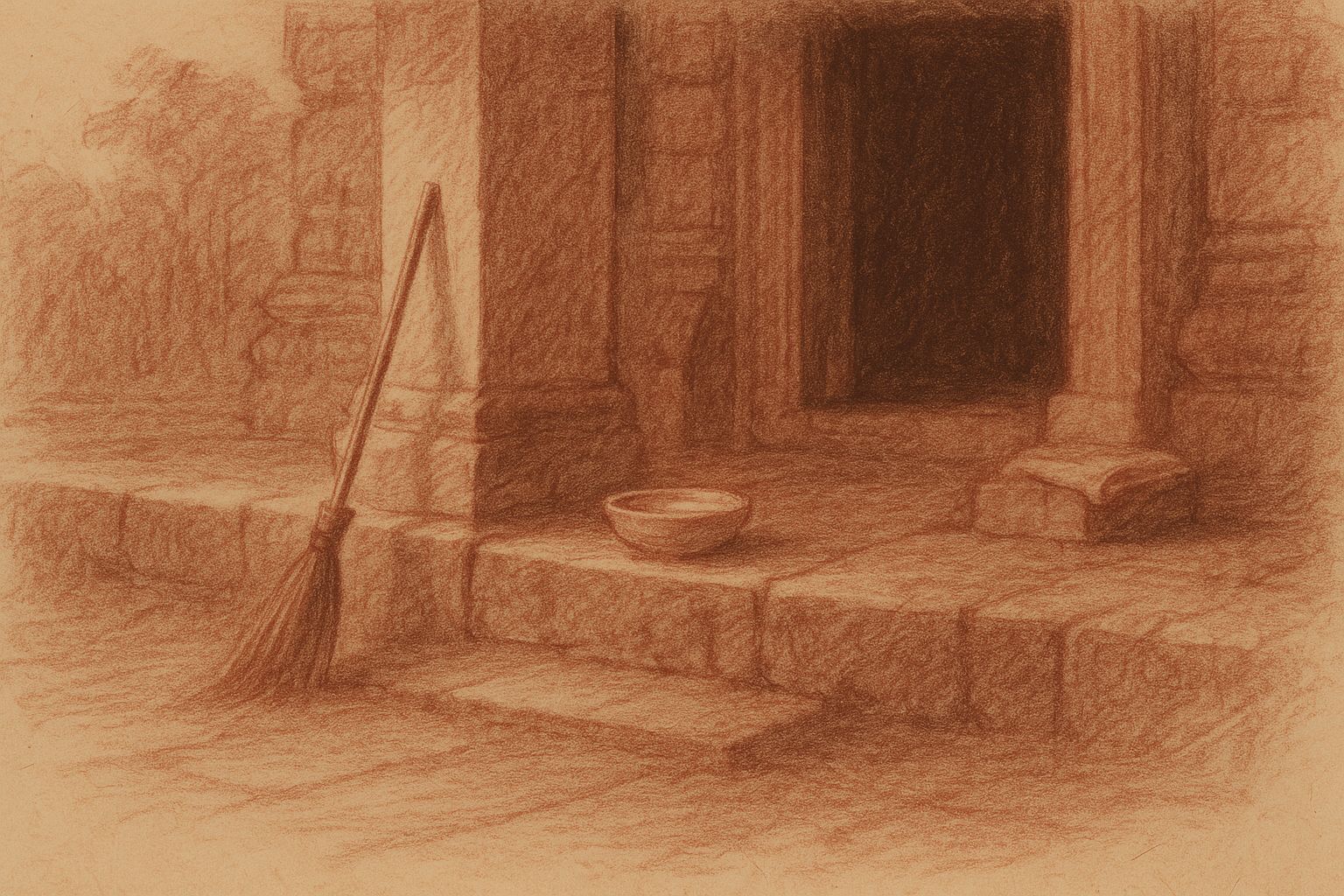
Those Who Keep the Way Open — On the Quiet Guardians of Angkor’s Thresholds
3 min read
Quiet gestures shape the way into Angkor — a swept stone, a refilled bowl, a hand steadying a guardian lion. This essay reflects on the unseen custodians whose daily care keeps the thresholds open, revealing how sacredness endures not through stone alone, but through those who tend its meaning.
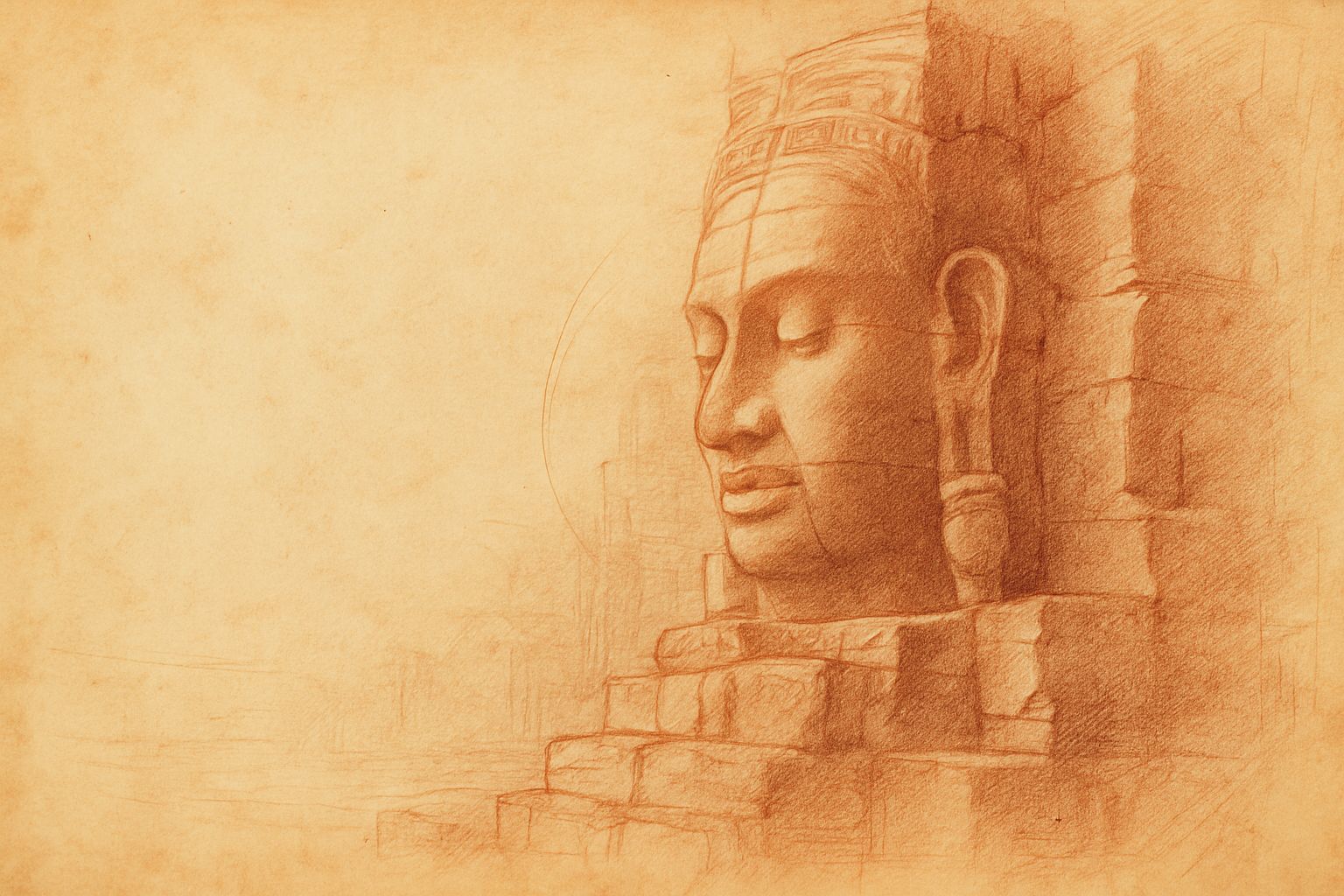
Multiplicity and Mercy — The Face Towers of Jayavarman VII
5 min read
A new vision of kingship rises at the Bayon: serene faces turned to every horizon, shaping a world where authority is expressed as care. Moving through the terraces, one enters a field of steady, compassionate presence — a landscape where stone, light, and time teach through quiet attention.
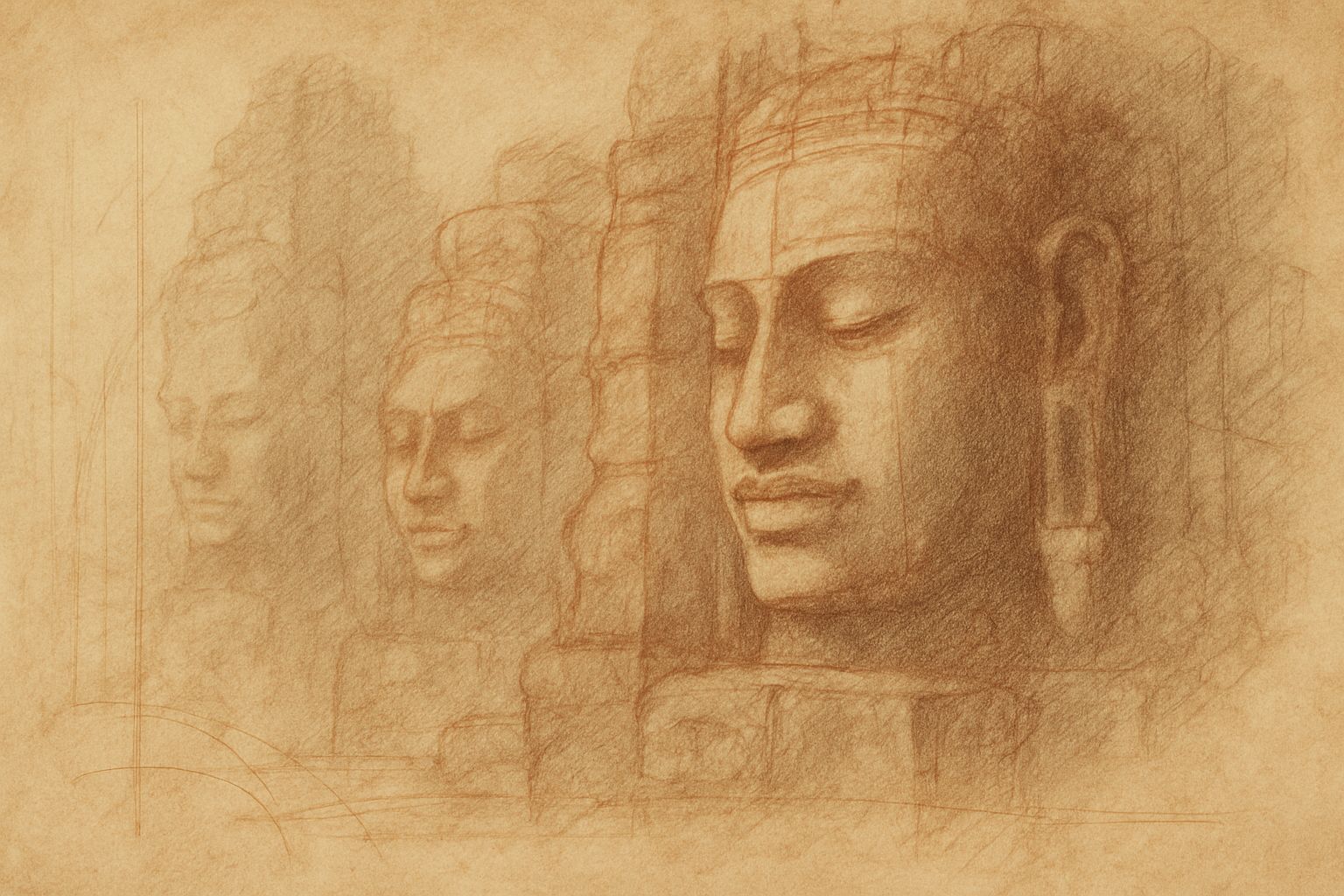
Stone That Dreams
4 min read
Bayon wakes like a mind emerging from shadow. Its many faces shift with light and breath, teaching that perception—and the self—is never singular. In walking this forest of towers, the pilgrim discovers a quiet multiplicity within, held together by a calm that feels both ancient and newly understood.
Join My Studio Journal
Receive occasional letters from my studio in Siem Reap—offering a glimpse into my creative process, early access to new fine art prints, field notes from the temples of Angkor, exhibition announcements, and reflections on beauty, impermanence, and the spirit of place.
No noise. No clutter. Just quiet inspiration, delivered gently.
Subscribe and stay connected to the unfolding story.
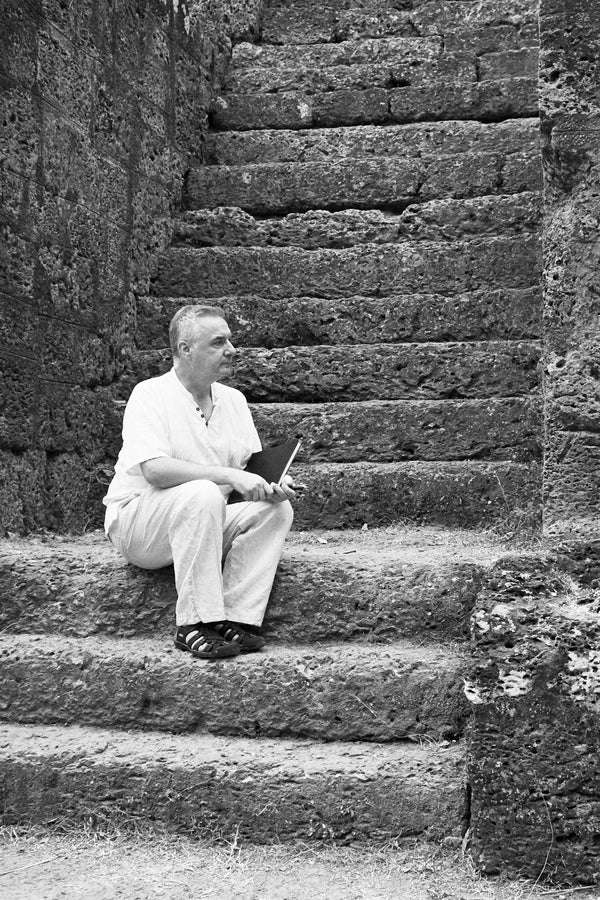
Join My Studio Journal
Receive occasional letters from my studio in Siem Reap—offering a glimpse into my creative process, early access to new fine art prints, field notes from the temples of Angkor, exhibition announcements, and reflections on beauty, impermanence, and the spirit of place.
No noise. No clutter. Just quiet inspiration, delivered gently.
Subscribe and stay connected to the unfolding story.
